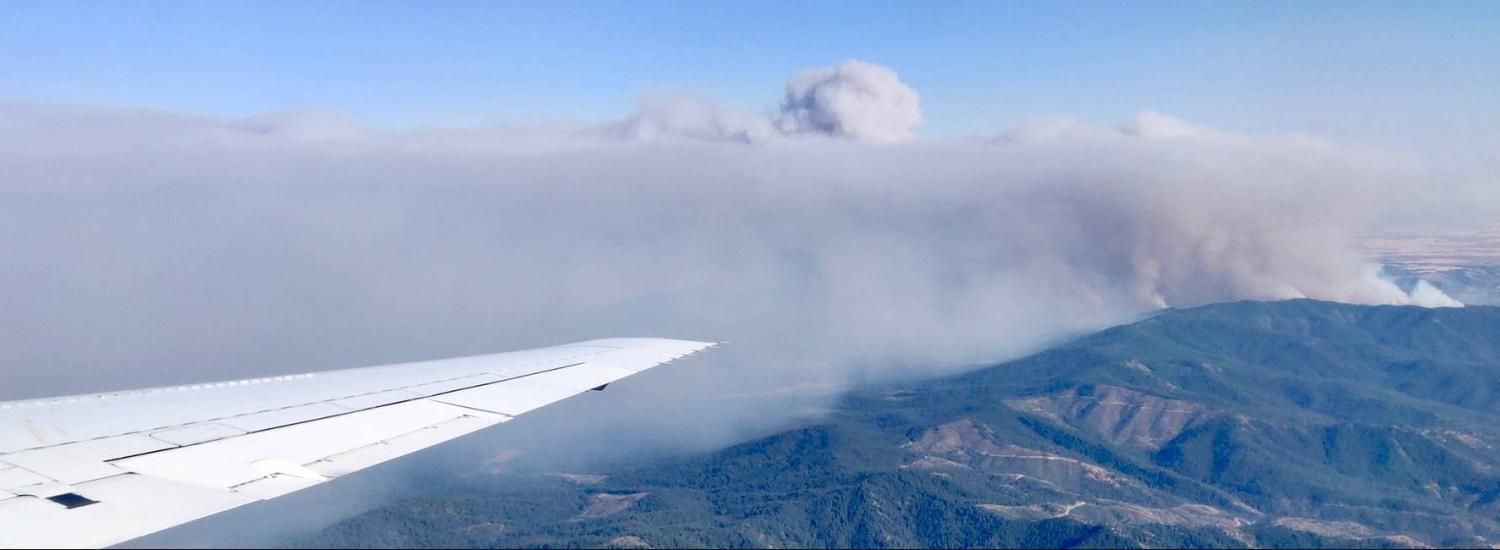Air pollution from wildfires, rising heat affected two-thirds of U.S. West
On a single day in 2020, 43 million people in the region experienced harmful levels of air pollution

Large wildfires and severe heat events are happening more often at the same time, worsening air pollution across the western United States, according to a new study led by Washington State University, with CIRES and NOAA’s Global Systems Laboratory. On one day in 2020, more than 68 percent of the U.S. West—representing about 43 million people—were affected by harmful levels of air pollution, the highest number in 20 years.
“We have seen an increasing trend in the past 20 years of days when high levels of both particulate matter and ozone are occurring simultaneously,” said Dmitri Kalashnikov, the paper’s lead author and a WSU graduate student. “This is tied to two things: more wildfires and increases in the types of weather patterns that cause both wildfires and hot weather.”
The study, published in Science Advances, found that such widespread air pollution events are not only increasing in frequency, but also persisting longer and affecting a larger geographic area. These events have become so bad that they have reversed many gains of the Clean Air Act—and the conditions that create these episodes are expected to increase, along with their threats to human health.
When wildfires and extreme heat occur at the same time, they magnify air pollution: wildfire smoke increases fine particulate matter in the air and the heat combines with the smoke and other pollutants to create more ground-level ozone. While ozone in the stratosphere is protective, ozone that forms at ground level is harmful to human health. Simultaneous exposure of millions of people to both high levels of ground-level ozone and particulate matter poses a substantial public health burden.
In this study, the researchers examined certain weather patterns that typically lead to higher levels of ground-level ozone during summer months. High-pressure ridging, more commonly known as heat domes, occurs when an area of high-pressure air lingers over a region, trapping warm stagnant air and its pollutants close to the ground. Particulate matter used to be more common in the western United States during the winter, but wildfires have flipped that dynamic, bringing together the dangers of both particulate matter and ground-level ozone in the summer.
Kalashnikov and colleagues from CIRES and GSL, the University of California Merced, UCLA, the National Center for Atmospheric Research, and the Nature Conservancy of California, tracked air quality across the western states and parts of Canada from 2001-2020 with available monitoring station data. They combined these data with wildfire information derived from NASA satellites and weather data produced by the European Center for Medium-Range Weather Forecasts.
Co-occurring events were defined as days that registered in both the top 10 percent in particulate matter levels and the top 10 percent in ozone. The researchers found that annual population exposure to these extreme combined episodes is increasing by approximately 25 million person-days a year—a figure that counts both the number of people affected and the number of days they were impacted by air pollution.
“If the trend of more frequent sunny, hot, and dry conditions in the U.S. West continues as projected in a warmer world, we can likely expect increases in summertime wildfires that cause these extreme ozone and particulate matter pollution episodes,” said Jordan Schnell, a CIRES scientist working in NOAA's Global Systems Laboratory and one of the paper’s co-authors.
These extreme air pollution events potentially could be mitigated by taking measures to slow the temperature rise caused by climate change, as well as better managing wildfires with practices such as prescribed burns. Aside from those efforts, the researchers suggested treating these air pollution events like a severe snowstorm or heat wave and making sure people have shelters equipped with air filters where they can go to get out of polluted air. They also recommended adopting policies that minimize exposure for people who typically work outside.
The size of the simultaneous air pollution events will make it difficult for many people to avoid their impacts, according to study co-author Deepti Singh, a WSU assistant professor. “Preparing for these events is really important. We need to think about who is exposed, what capacity there is to minimize that exposure, and how we can protect the most vulnerable people,” she said.
This news story was adapted from a story by Washington State University.